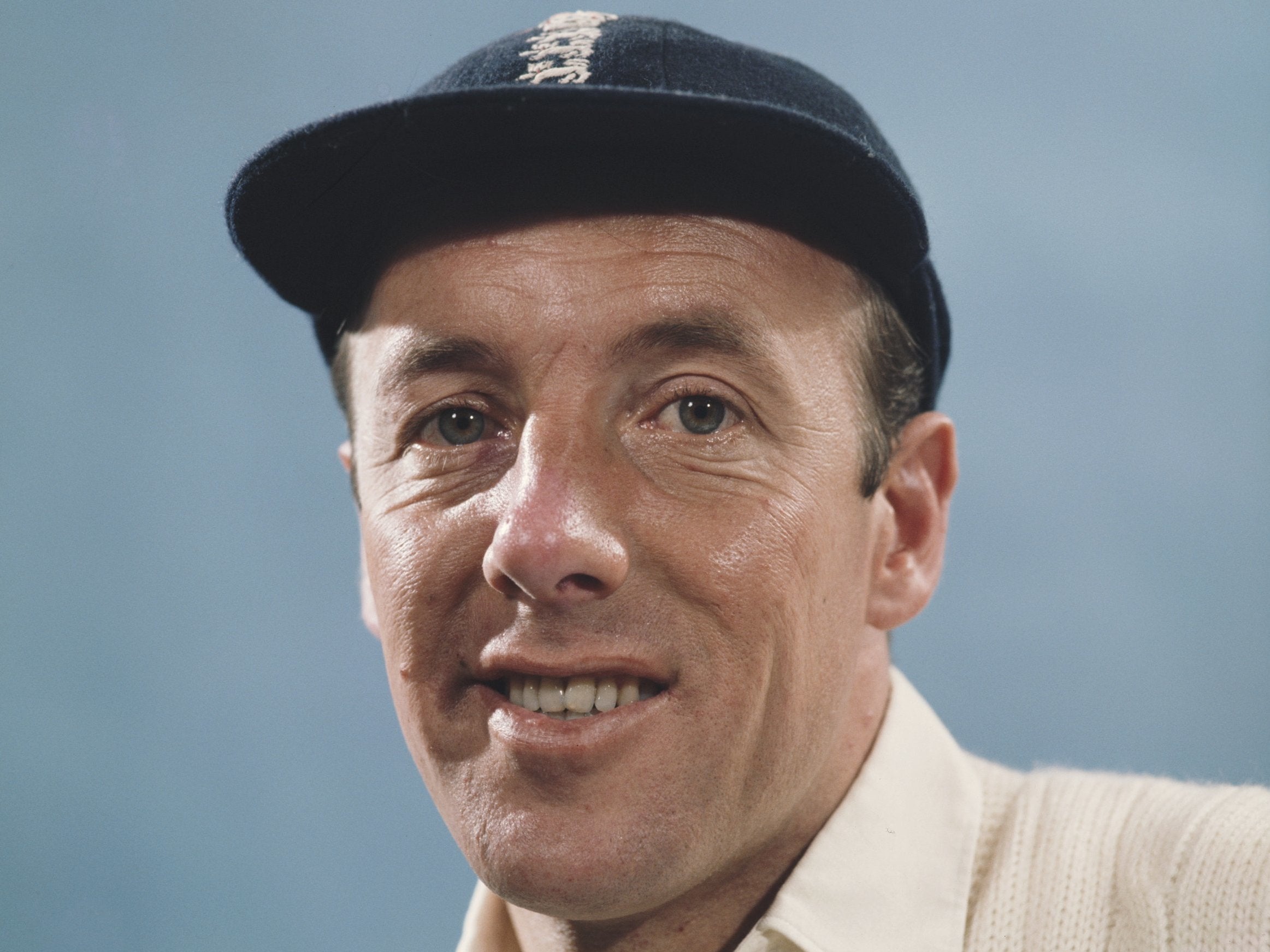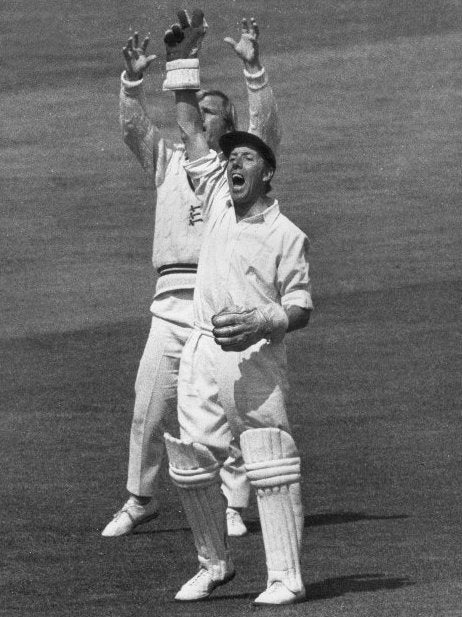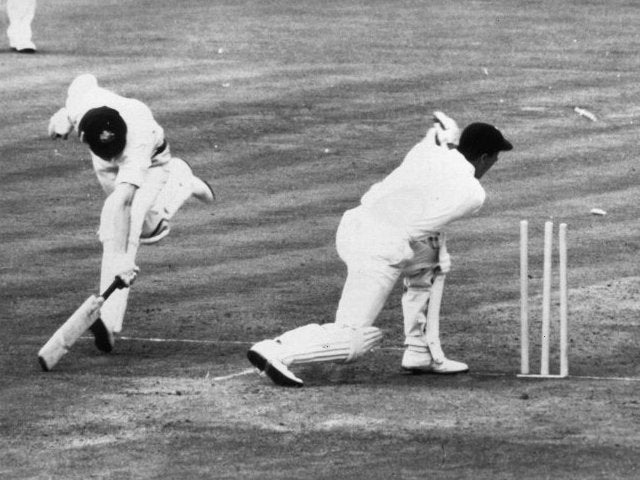John Murray: The stylish cricketer who rewrote the record books
A wicket-keeper who enjoyed outstanding first-class career with Middlesex, spread over a quarter of a century

Your support helps us to tell the story
From reproductive rights to climate change to Big Tech, The Independent is on the ground when the story is developing. Whether it's investigating the financials of Elon Musk's pro-Trump PAC or producing our latest documentary, 'The A Word', which shines a light on the American women fighting for reproductive rights, we know how important it is to parse out the facts from the messaging.
At such a critical moment in US history, we need reporters on the ground. Your donation allows us to keep sending journalists to speak to both sides of the story.
The Independent is trusted by Americans across the entire political spectrum. And unlike many other quality news outlets, we choose not to lock Americans out of our reporting and analysis with paywalls. We believe quality journalism should be available to everyone, paid for by those who can afford it.
Your support makes all the difference.Few men have made such a distinctive contribution to English cricket as former Middlesex and England wicket-keeper, John Murray.
While enjoying an outstanding first-class career spread over a quarter of a century, he was singularly unfortunate not to have appeared more for England, being a victim of an age when wicket-keepers were selected more for their batting ability.
Constantly rewriting the record books, he crowned his illustrious career in fine style by overtaking Herbert Strudwick’s longstanding world record number of victims.
Born in Kensington, west London, Murray’s outstanding all-round sporting prowess came to the fore when a member of the local rugby boys’ club. An equally fine footballer, as a tricky inside forward, he played as an amateur for Arsenal before turning down manager Tommy Lawton’s offer of a professional contract with Brentford. Nimble on his feet, he was also a successful junior boxing champion. As a cricketer, initially a batsman-come-bowler, when the boys’ club wicket-keeper broke his finger in a local final, Murray subsequently replaced him and never looked back.
Murray joined the Lord’s ground staff in 1950, aged 15. Two years of heavy scoring, including a first century at Lord’s, when undertaking his National Service in the Royal Air Force, merely served to underline his prodigious talents. Making his Middlesex debut against Leicestershire at Grace Road in 1952, he eventually took over wicket-keeping duties permanently from Leslie Compton at the end of 1955.

Initially blooded rather unsuccessfully as an opening batsman before slotting seamlessly into the Middlesex middle order, over the next 20 years, he remained an automatic member of the side.
A stylish attacking right handed batsman with a particular relish for fast bowling, Murray was an exquisite driver as well as being a fearless hooker of anything dropped short. Always immaculately attired, as a wicket-keeper of exceptional ability, he brought off any number of spectacular diving catches. Before each delivery he would go through a studied ritual before settling on his haunches.
The gloves would be touched together and jammed into place as if undertaking an abridged version of “Chopsticks”. Even the returning of the ball to first slip was done with an elegant sense of grace.
Capped at the end of 1956, his first full season in the Middlesex side, a final total of 63 catches and 14 stumpings saw him hailed as that year’s leading wicket-keeper. Twelve months later, he not only claimed 104 victims (82 caught and 22 stumped), but also passed 1,000 runs with the bat, thus joining the legendary Leslie Ames as only the second wicket-keeper in the history of the game to achieve this double. Acclaimed as one of Playfair Cricket Monthly’s cricketers of the year, ten years later, further outstanding performances saw him suitably honoured as one of Wisden’s Cricketers of the Year.

In the interim, as the heir apparent to Godfrey Evans, he made his test debut against the Australians at Edgbaston in 1961, retaining his place throughout the five-match series. At Old Trafford he held seven catches, creating a new record for an England wicket-keeper against Australia. An automatic choice for the winter tour of Pakistan and India, he began well until injury intervened and he was flown home.
It was the same in Australia 1962-63, when an unfortunate shoulder injury deprived him of a regular England place. Sussex’s Jim Parks, who was perceived as a more productive batsman, subsequently to his place,
While enjoying a successful benefit in 1966, Murray was one of six changes made in a restructured England side to face the all-conquering West Indies in the final test of the series at the Oval. Coming to the wicket with England on 166 for 7 when Murray joined Tom Graveney. Sharing a stand of 217, Murray scored 112 as England went on to win a memorable test match. In Barbados the following year, playing for a World XI, again against Hall and Griffith, he scored a memorable 121. In all he won twenty one England test caps, scoring 506 runs and claiming a total of fifty five dismissals.
Between 1953 and 1975, JT as he was universally known, made 508 first-class and 147 list A appearances for Middlesex, claiming a total of 1,527 dismissals and scoring 18,872 runs. He passed 1,000 runs in a season six times, his best total being 1,160 in 1965. Of his sixteen centuries, his top score remains the 142 he made for MCC versus North Eastern Transvaal at Pretoria in 1964-5. He had eight victims in an innings three times: against Glamorgan in 1960; Yorkshire the following year; and Hampshire in 1965. As a bowler, his 341 balls included ten maidens as he took 6 for 242.
Serving as Middlesex vice captain for five years under both Fred Titmus and Peter Parfitt, he remained a splendid team man: always the one to have around the dressing room or on the field if things were going wrong or morale was low. When, at the start of his valedictory season in May 1975, Surrey’s Dudley Owen Thomas edged Tim Lamb into Murray’s gloves to become his 1494th victim, he was able to claim a new wicket keeping world record. Disappointingly however, losing out in both that season’s one day finals, meant Murray ended an outstanding career trophyless.
Awarded an MBE, he initially served as an England selector, resigning over the choice of wicket-keeper Roger Tolchard for the 1978/9 Australian tour. A founding member of the Cricketers’ Association, for some years he served as its treasurer. Away from the game, he worked for his great friend, Derrick Robins, before moving to Slazenger for a time, eventually going on to set up his own security company. Initially taken ill while at Lord’s for Middlesex’s county championship encounter with Warwickshire, he died later that evening, aged 83.
John Thomas ‘JT’ Murray, cricketer, born 1 April 1935, died 24 July 2018
Join our commenting forum
Join thought-provoking conversations, follow other Independent readers and see their replies
Comments